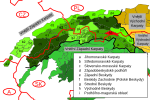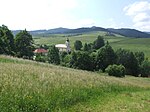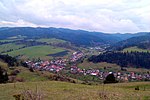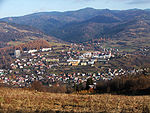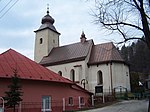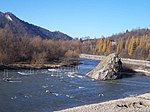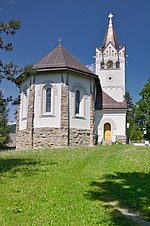Jaworki, Lesser Poland Voivodeship
Nowy Targ County geography stubsVillages in Nowy Targ County

Jaworki [jaˈvɔrkʲi] (Lemko: Явіркы, Ukrainian: Явірки, romanized: Yavirky) is a village in the administrative district of Gmina Szczawnica, within Nowy Targ County, Lesser Poland Voivodeship, in southern Poland. It was formerly part of the town of Szczawnica, but was made a separate village on 1 January 2008 (as was Szlachtowa). It includes the former villages of Biała Woda ("white water") and Czarna Woda ("black water"). The village used to constitute a part of Ruś Szlachtowska region, the westernmost area inhabited by Lemkos. Two other villages of this region Biała Woda and Czarna Woda are now part of the village Jaworki.
Excerpt from the Wikipedia article Jaworki, Lesser Poland Voivodeship (License: CC BY-SA 3.0, Authors, Images).Jaworki, Lesser Poland Voivodeship
Czarna Woda, gmina Szczawnica
Geographical coordinates (GPS) Address Nearby Places Show on map
Geographical coordinates (GPS)
| Latitude | Longitude |
|---|---|
| N 49.410277777778 ° | E 20.551944444444 ° |
Address
Czarna Woda 37
34-460 gmina Szczawnica
Lesser Poland Voivodeship, Poland
Open on Google Maps


